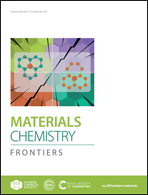A thiourea resin polymer as a multifunctional modifier of the buried interface for efficient perovskite solar cells with reduced lead leakage†
Abstract
The defects at a buried SnO2/perovskite interface can influence device performances by inducing bad interface contact, imperfect perovskite crystallinity, and serious nonradiative recombination loss. Herein, a thiourea resin polymer is deposited at a buried interface. As a multifunctional modifier, thiourea resin can enhance the interface connection and regulate the crystallinity of the perovskite by possible chemical interactions and increased nucleation sites. Thiourea resin can reduce the nonradiative recombination loss related to defects by filling the oxygen vacancy defects of SnO2 and passivating the undercoordinated lead defects in the buried perovskite. Significantly, the devices with thiourea resin modification yield a power conversion efficiency of 21.10%, 13.75% higher than that of the device without modification (18.55%). Besides, thiourea resin improves humidity stability by protecting the perovskite from the erosion of moisture due to its water resistance. After aging in air with a relative humidity of 20–30% for 720 h, the unencapsulated device with thiourea resin modification retains 90% of its initial performance. The thiourea resin can suppress lead leakage through the strong interaction between thiourea resin and Pb. This work provides a valid modification strategy for the buried interface.



 Please wait while we load your content...
Please wait while we load your content...